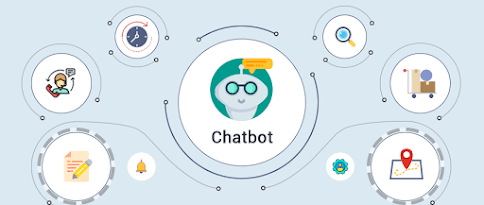I am Aswith Krishna Asok pursuing MBA in Amrita School of Business, Coimbatore. Recently I came across an article about the role of Chatbots in Logistics and Supply Chain Management and here are some of the insights that I gathered.
Chatbots
in customer facing operation:
Chatbots helps a company in ensuring optimum
customer service. Chatbots helps in serving the customers better in various
ways.
During placing of an order, the chatbot can handle necessary order details like
pickup and delivery location, dates, rates, insurance and more just like a human
agent. It can also process orders and send an invoice directly to the
customer's inbox or email.
Customers
can make changes to their orders in the same way they place an order with the
chatbot. The tool may also be able to pull in tracking numbers based on past
conversations and apply special conditions if necessary. This, too, can be done
without any human involvement.
Chatbots make tracking easy and simple!
Customers don't need to full up tracking numbers in online forms each time to
know the status of their delivery. They can just talk to the logistics chatbot
and get help with all tracking issues.
Customers can also use the same interface
every time, be it Facebook, Skype, or company website. The chatbot will
remember all their details to provide a context-based service.
Chatbots In Supply Chain Operation
In logistics operations, chatbots will contribute a lot to a smooth information flow. Employees can easily access the data collected and needed for daily operations through a chatbot. Chatbots can be used by a logistics company to handle various types of data, such as
Customer Orders
You can access and review customer orders using chatbots. You will have all the orders which customers place through chatbots and can also link it with data from other sources. Logistics chatbots help you to handle all data related to customer orders in real-time.
In logistics, AI chatbots can render inventory
management and warehouse tasks a breeze. Is there a need for a delivery boy to
locate a specific package stored among a thousand others? Just ask your chatbot
where the package is stored-and the exact rack number is given to you as the
answer!
Fleet
Information
To monitor their cars, their directions,
status and more, companies use transportation apps. To control orders and
distribution routes, it is important to know where your drivers are. You may
ask your chatbot to tell you which cars are idle, which one is closer to a
pickup point, and effectively schedule tasks.
Personnel Information
Using apps, you can also monitor the status and availability of your drivers, workers and other staff. And then connect it to your chatbot in order to get fast responses without having to search data sets.
Transport chatbots give your tasks a boost and make your entire team more efficient. To streamline your workflow and leverage activities, you can incorporate AI chatbots into logistics with other technologies. Some of the technologies for which you can incorporate chatbot transportation are—
In the logistics and transportation business,
connected devices have already become a rage. Key players have begun using
connected devices to measure warehouse temperature, humidity, inventory,
out-of-stock products and more, such as sensors, metres, counters.
You can now combine chatbots with IoT in logistics to streamline the flow of information in warehouse management. For example, when humidity levels in the warehouse cross or drop below the necessary requirements, a chatbot linked to humidity sensors will automatically send information to managers.
To alert managers about shipment deliveries, the weight of goods, missing items, and so on, you can also use transport chatbots.
Voice
recognition
Speech recognition, combined with Chatbot
logistics, will do wonders! Voice can be easily formed as a contact platform
for workers who can not access their cell phones or laptops. Voice recognition
chatbots can also go a long way in answering your clients' basic questions
The integration also makes it easy to manage
operations. To navigate the warehouse and the roads, your forklift operator or
driver can obey voice commands without having to look at floor plans or the
map. If they have any questions, they can always speak to the chatbot to answer
queries and do their job efficiently.






No comments:
Post a Comment